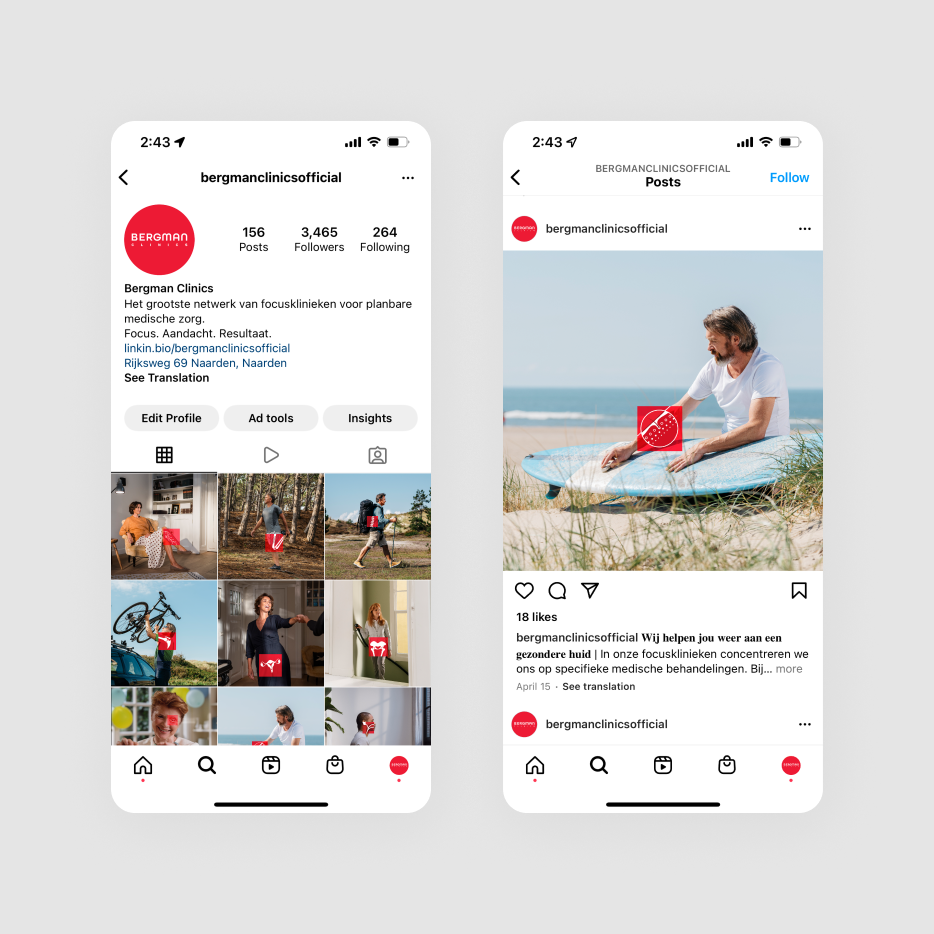Bergman Clinics
CX-Driven Transformation. Elevating patient‑centred care.
Bergman Clinics set out to match medical excellence with a calm, supportive experience at every step. The aim was simple to state and hard to deliver: make patients feel informed, respected and looked after from first contact to aftercare.
- Strategy
- Brand Exposure
- Design
- Client
- Bergman Clinics
- Industry
- Healthcare
- Read time
- 2




The Challenge
Clinical standards were high, but the experience felt uneven across clinics and channels. Patients wanted clear information, easier access and reassurance between appointments. The task was to align expertise with personalised care so every patient received outstanding treatment and felt confident throughout the journey.

Strategy
Our approach to customer experience (CX) shapes every step of the patient journey, from first information and access to aftercare. We start by making information clear and easy to understand. Instead of long, complicated leaflets, patients get plain‑language guides, short videos, and simple checklists that give a realistic picture of the treatment, possible risks, and recovery. This helps patients give consent with confidence rather than feeling rushed.
Each patient follows a pathway that fits their situation. Simple triage questions guide the steps based on their condition and needs, allowing patients to get pre‑operative preparation, pain management tips, and recovery plans that suit them.
Getting access and making appointments is made as simple as possible. Referrals, intake, and bookings are handled with online forms, timely reminders, and clear directions within the clinic. This reduces repeated calls and helps patients feel more at ease.
Care is connected across the entire journey. Specialists, tests, procedures, and aftercare all work together, and updates are shared with GPs when needed. Patients have one main contact for questions, making communication straightforward and reliable.
Inclusivity and accessibility are central to the design. All materials are written in plain English, available in multiple languages when needed, and meet accessibility standards on paper, online, and in apps. Patients can send messages about practical questions, with clear guidance on when they will get a reply.
Finally, we track the things that matter most to patients and clinicians and use that feedback to keep improving. Key measures include preparation quality, missed appointments, time to treatment, understanding at discharge, and patient-reported outcomes. By following these metrics and adjusting where needed, the experience stays focused on the patient, making every step of the journey easier, clearer, and more supportive.


Implementation
We began with interviews, diary studies and a review of calls and emails to learn where patients felt unsure. These insights informed a service blueprint that mapped each step from referral to recovery, with clear owners for clinical and non‑clinical touchpoints.
Content was rebuilt around patient questions. Each treatment now has a structured set of materials: what to expect, how to prepare, what to bring, when to call and how recovery usually feels in the first 24 hours, first week and beyond. Clinicians reviewed every page, and copy was tested for readability.
A modular design system keeps digital and in‑clinic materials consistent. The same components and tone appear on the website, in appointment emails, in waiting‑room screens and in printed handouts. Forms were simplified and made mobile friendly.
Systems were connected to reduce effort for patients and staff. The electronic health record (EHR) integrates with online booking and reminders so details stay in sync. Secure messaging and photo upload support quicker checks during recovery, reducing unnecessary travel.
Result
At Bergman Clinics, putting the patient experience at the center turned treatment from a series of appointments into a supportive partnership. Clear preparation materials and predictable communication helped patients feel confident before procedures and reduced last-minute questions. Reminders and simpler forms made it easier for patients to arrive prepared, keeping clinic flow smooth and minimizing rescheduling.
Transparent guidance and a named contact made it easier for patients to ask questions, building trust and supporting adherence to pre- and post-op instructions. Positive feedback showed how a consistent, thoughtful approach strengthened the clinics’ reputation. Clinicians noticed improved preparation, smoother follow-ups, and quicker resolution of minor concerns through secure messaging.
Dashboards track preparation, call volumes, message response times, patient-reported outcomes, and complaints versus compliments, guiding ongoing improvements. Bergman Clinics shows how patient-focused care creates better outcomes and lasting confidence.
Want to collaborate?
Discover how to transform your company with a human-centered approach and enhance the value of your customers' experience on a large scale.


